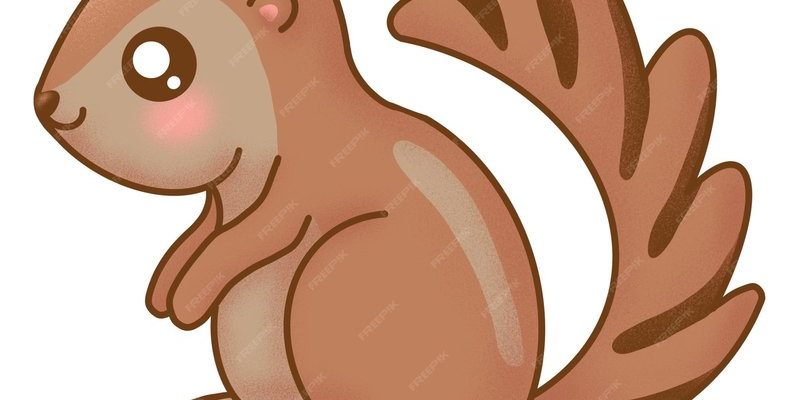![Comparing The Xerus Vs. [Similar Species]](https://gudri.com/wp-content/uploads/2025/06/Comparing_The_Xerus_Vs___Similar_Species__image_0.jpg)
If you’ve ever seen a squirrel darting across your yard or perched on a branch, you might be surprised to learn there are different types. The **xerus**, for instance, is a fascinating African species that thrives in arid environments. In contrast, ground squirrels are more widespread across North America and come in various species. Let’s break down the key differences and similarities between these two intriguing animals.
Physical Characteristics
When comparing the xerus and ground squirrels, one of the first things to notice is their physical features. Xerus have a distinctive look, with a slim body and a longer tail that helps them maintain balance when climbing or scurrying across rocky terrain. Their fur tends to be a light brown or gray, which helps them blend into their surroundings, making them less visible to predators.
On the other hand, ground squirrels have a sturdier build and are often a bit stockier. Depending on the species, their fur can range from light gray to a rich, earthy brown. Ground squirrels are notorious for their large cheek pouches, which they use to store food. Picture them munching on seeds and then stuffing their cheeks full—it’s quite a sight!
Habitat and Distribution
Habitat plays a crucial role in defining the lives of these two species. Xerus are primarily found in the dry regions of Africa, particularly in savannas and grasslands. They’ve evolved to thrive in tough environments, often digging extensive burrow systems that provide shelter from the harsh sun and predators. These burrows can be quite complex, with multiple entrances and chambers designed for sleeping and storing food.
In contrast, ground squirrels are more versatile in their habitat preferences. You can find them in forests, grasslands, and even suburban areas. They enjoy open spaces where they can dart around and forage for food. Ground squirrels often live in colonies, which helps enhance their protection from predators. Teaming up with friends can keep them safe, while they take turns being on lookout duty.
Diet and Feeding Habits
Both xerus and ground squirrels are primarily herbivorous, meaning their diet mainly consists of plants. Xerus tend to munch on roots, seeds, and tubers they find underground. They are known for their ability to forage extensively, which is crucial in their sparse habitats. Imagine them digging around in the dirt, searching for the next tasty snack to nibble on.
Ground squirrels, on the other hand, have a more varied diet. They enjoy a mix of seeds, nuts, fruits, and even some insects, especially in the summer. Their ability to store food in their cheek pouches means they can gather their meals and save some for later. When fall rolls around, these squirrels prepare themselves for the colder months ahead.
Behavior and Social Structure
When it comes to behavior, there are notable differences between xerus and ground squirrels. Xerus are generally more solitary animals, often seen alone or in small groups. They can be quite skittish, and their alertness helps them avoid predators. You’ll often find them sitting up on their hind legs, using their keen sense of sight and smell to detect any possible threats.
In contrast, ground squirrels thrive in social situations. They usually live in colonies of several individuals. This social structure has its perks: by living in groups, they can provide extra vigilance against predators. Ground squirrels communicate with each other using various sounds, including chirps and whistles, to alert their friends to danger. It’s like having a built-in warning system!
Reproduction and Lifespan
Reproduction habits also differ between the two species. Xerus typically mate once a year. After a gestation period of about two months, the female gives birth to a small litter of pups. These little ones start to emerge from the burrow after about a month, learning to navigate the world around them while staying close to their mother.
Ground squirrels have a slightly different approach. They often breed in the spring, with the female giving birth to several pups after a gestation period of around four weeks. The pups are born blind and hairless but grow quickly, becoming independent within a couple of months. As for lifespan, both species tend to live around 3 to 5 years in the wild, although some individuals can live longer in captivity.
Conservation Status
Understanding conservation is crucial when considering both xerus and ground squirrels. The xerus, while not currently endangered, faces threats from habitat destruction due to agricultural expansion and urban development in their native regions. Conservation efforts are essential to maintain their populations and protect their natural habitats.
Ground squirrels, depending on the species, may have different levels of conservation concern. Some ground squirrel populations are stable, while others face challenges from habitat loss and predation. Efforts to preserve their environments—like protecting grasslands and reducing pesticide use—are vital for their survival.
Final Thoughts: Choosing Your Favorite
At the end of the day, whether you favor the **xerus** or the ground squirrel depends on what you appreciate in these lovely rodents. The xerus, with its adaptability to harsh environments, showcases resilience and charm, while ground squirrels display social behavior and clever survival tactics.
So, next time you spot one of these adorable animals, take a moment to appreciate what makes them unique. Whether they’re foraging for food, scurrying across the ground, or simply enjoying a sunny day, both xerus and ground squirrels add richness to the animal kingdom. The world of wildlife is vast and varied, and it’s our curiosity that connects us to these remarkable creatures!

